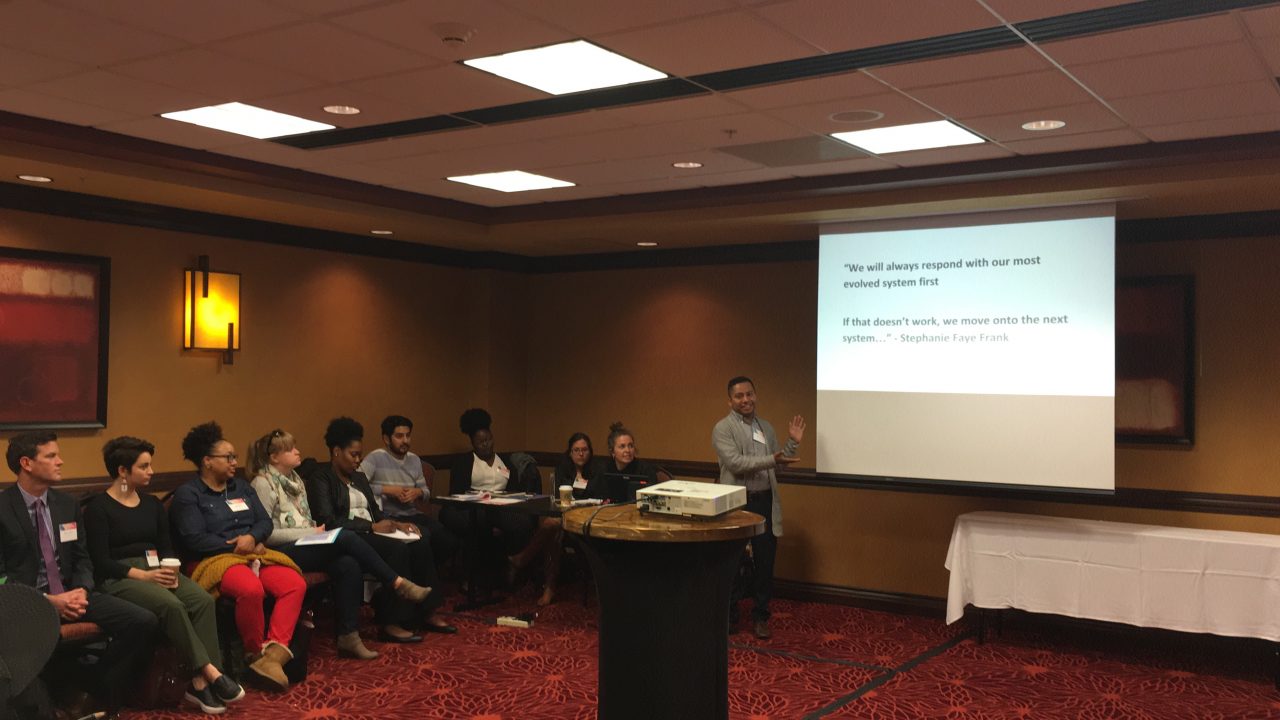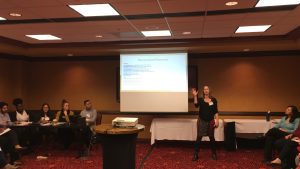On October 30–31, Illinois State University hosted the Culturally Responsive Campus Community (CRCC) conference in Bloomington-Normal for the third year. This year the CRCC conference sought to program presenters that would, “provide tangible strategies and recommendations that can empower individuals to take a more active role in breaking down and dismantling oppressive systems,” according to their website.
Elisa Williams, a student at Illinois State describes the importance of the conference to her.
“It arrived during a time that was tumultuous for different marginalized communities around the country and especially on ISU’s campus,” she said. “CRCC gives many students the chance to voice their concerns, both in a scholarly way and in a personal way. The panels allow students to share the knowledge that they’ve gained in courses alongside professors, and they also allow for students and faculty to engage in those tough conversations that are necessary across the board.”
The Chicago Teacher Education Pipeline program (CTEP), of the Illinois State University National Center for Urban Education, integrates the voices of community, university, and school districts in teacher preparation. CTEP currently partners with five community-based organizations across Chicago. In allyship, these groups hope to cultivate and sustain innovative and effective educators for urban schools.
The community liaison presenters were: Ana Mosqueda, lead community site coordinator at Latinos Progresando; Carlos Millan, education coordinator at The Resurrection Project; Brienne Ahearn, education coordinator at North River Commission; José Guerrero, program coordinator with CTEP; and Elisa Williams, a current Illinois State student in the College of Education.
“This conference is extremely important, as it provides a safe space that leads discussions on diversity, racial awareness, white privilege, and social justice. Due to the current political climate, these topics are more important than ever,” Mosqueda said.
Latinos Progresando is an organization that serves the mostly Mexican-American/Latinx community known as “Marshall Square” in Chicago with services addressing immigration, education, including being a bridge to other community-based organizations within their network. As a collective, the organizations presented “Using Neuroscience to Empower Urban Teachers and Students” to a standing room only crowd.
“Each slide was planned specifically for the conference so that the intended audience could get as much out of the information as possible,” Williams said. “We were able to talk about how in order for students to have a meaningful learning experience, they must first experience both physical and emotional safety.” A large portion of the groups presentation explained how brain function and development play a significant role in one’s ability to learn, and how the brain can be rewired for an optimal learning experience. The group intentionally decided to include a current student, Williams, in the presentation from the outset.
“Having Elisa be part of the presentation was extremely important because we need to bring everyone to the table,” Millan said. “We had community partners, professors, and staff at the table working together. Elisa’s presence centered and shaped our presentation for the audience we wanted to reach.”
Millan is the community liaison between The Resurrection Project in Pilsen and CTEP. The Resurrection Project began as an organization that created programming for the residents of Pilsen that led them from being renters to homeowners, in addition to advocating for affordable housing in the neighborhood. Now, they serve the neighborhood in the additional areas of community health and education. Millan also oversees after-school programming for the elementary schools in Pilsen.
At the end of the presentation, Williams led the audience members and presenters in a closing circle to reiterate the importance of working together as a collective for the betterment of communities we strive to serve.
“For me, personally, CRCC has allowed me to expand my professional knowledge and participation as well as have a space to voice the frustrating feeling that I’ve been holding onto with regard to being a Black student at a predominately white institution,” Williams said. “Having the chance to present information that’s both important to education and important to human nature with people who are invested in the initiative was awesome.”


